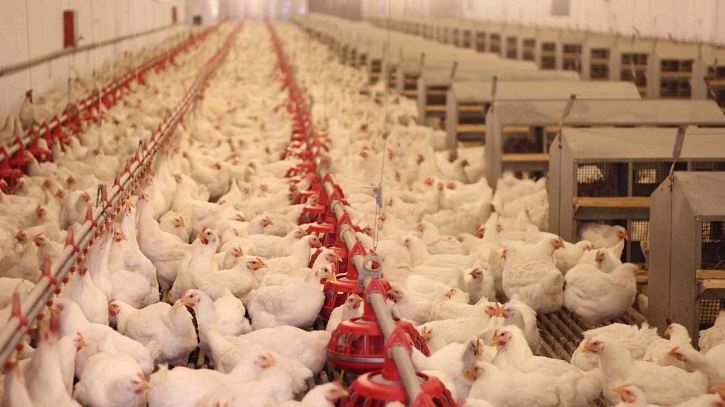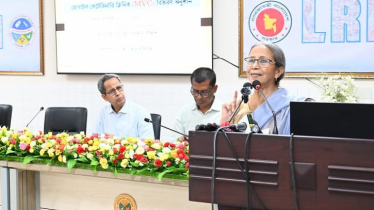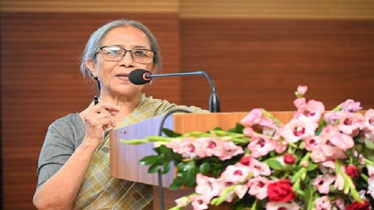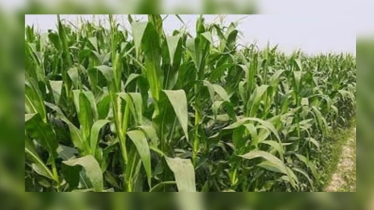
Self Sufficiency in Protein: Poultry Industry in Bangladesh
Among all the sub-sectors of the livestock sector in Bangladesh, poultry stands as one of the most important ones. Chickens, ducks, and turkeys are considered poultry and other domesticated birds. According to USDA, the industry had several bottlenecks in the past, but in 2019 it met 36% of the country’s demand for meat. Many people in Bangladesh rely on the chicken sector because they can raise chickens at home. In addition, this sector plays a vital role in rural economic growth and women’s empowerment. According to the Bangladesh Poultry Industry Central Council (BPICC), Bangladesh’s poultry sector currently produces 1.5 to 1.6 percent of the country’s GDP. In addition, the sector employs approximately 6 million people directly and indirectly in the country.
Overview of Poultry Industry
Poultry farming in rural Bangladesh has been around for a long time. Meanwhile, the modern poultry business in Bangladesh began in the 1960s by introducing new breeds and technologies. ‘Eggs and Hens’ created their first commercial venture in 1954. Bangladesh’s poultry industry began to expand modestly in the middle of the next decade. Development was gradual until the 1980s, but since the 1990s, when private companies and NGOs began to work, the industry’s growth steadily increased. Bangladesh’s poultry sector has been entirely import-dependent in the past but has become self-sufficient in just 30 years.
Bangladesh’s main poultry products are chicken, duck, quail, pigeons, and turkey. In addition, there are four more diverse types of chickens- Broiler, Layer, Sonali, and local. According to Light-Castle, more than 58.39 percent of the total chickens in Bangladesh are broiler breeds. There are currently over 53,000 broiler farms in Bangladesh.
Sonali chickens account for 28% of the country’s chickens. Laying hens also make up over 8.23% of all hens. This type of chicken is bred primarily for egg production. There are currently around 18,000 layer farms in Bangladesh. Laying hens produce about 1.25 trillion eggs out of a total of 1.5 trillion eggs produced, 80.65% of all eggs commercially produced in the country. Sonali chickens lay the remaining 3 billion eggs. Various dealers buy eggs from these laying hen companies and sell them at regular markets, wholesalers, and online wholesalers. In addition, the facility maintains about 6% of domestic chickens often bred in home gardens in rural areas. Because it grows entirely naturally, the price is also high compared to other varieties.
Turkey and duck also belong to Bangladesh`s poultry sector. Although the primary turkey manufacturing in Bangladesh commenced in 2002, the recognition of this breed commenced in 2016. However, despite the reality that many traders won from turkey farms until 2019, numerous farms closed their doorways in 2020 due to unpredictable marketplace pricing and a lack of good advertising and marketing strategy. As a result, the range of turkey farms has reduced from 5,000 to 400. Furthermore, Bangladesh presently has over 6500 industrial duck farms.
A report in The Business Standard states that there are 90,000 chicken farms registered in Bangladesh. However, many more are not registered. These groups are labeled as large industrial farms, medium farms, and small farms. A parent stock farm, which raises parent or breeder hens, is in addition to these three categories. Later, these breeders create chicks from chickens, sold to regular farms. According to the BPICC, Bangladesh has 216 parent stock corporations. One hundred certified farms produce 1.48 crore chickens every week, often known as DOC or Day-Old Chicken. Breeders for parent stock businesses, on the other hand, are provided by the country’s 18 grandparent enterprises. These firms frequently import Grand Parent from the USA, Netherlands, Australia, and New Zealand.
Kazi Farms, Nourish, Paragon, Aftab G.P. Ltd., and Quality are leading participants in Bangladesh’s poultry business. Kazi Farms is now the market leader in this business. Although the firm was founded in 1996, they have been manufacturing parent chicken since 1997 and Grand Parent chicken since 2004. The firm is now Bangladesh’s leading Grand Parent and Parent Chicken manufacturer. According to Light-Castle, Kazi Farms controls 34% of Bangladesh’s broiler grandparents, and as the market leader, Kazi Farm regulates the price of chicks every week. In addition to Parent and Grand Parent, Kazi Farms controls 20% of the Layer Chicken market. Furthermore, Kazi Farms is the dominant participant in the processing and slaughtering sector.
Chicken feed mills and medical firms are among the poultry industry’s benefactors. BPICC says Bangladesh has 94 registered feed mills and about 200 unregistered feed mills. Of the 7 million tons of feed produced in 2019, 5 million tons were commercially produced by these feed factories. Handmade blends are employed for the remaining 2 million metric tons of feed. In addition, there are approximately 30 pharmaceutical businesses in the field that supply chicken vaccinations and medications. Organic manure, biogas, and electricity are abundant in poultry byproducts. Poultry droppings are abundant in nitrogen, phosphorus, and potassium, improving soil fertility and utilizing biogas generation.
The expansion of the fowl sector is enormously impacting Bangladesh’s protein deficiency. According to the Food and Agriculture Organization, an individual should consume at least 104 eggs each year. Nevertheless, Bangladesh reached its annual quota of eating eggs per capita in 2019. In addition, according to BPICC data, a total of 4.89 crore eggs are being produced commercially every day across the country. If computed every year, that comes to 1785 crore eggs. However, in 2010-11, this figure was just 608 crores. Egg production has grown nearly thrice (2.86) in the previous ten years, to phrase it differently.
DLS’s Livestock Economy Report 2020-21 argues that a person should consume at least 120 grams of meat per day, whereas 136.18 grams of meat is accessible to everyone in Bangladesh, with a per capita consumption of 6.7 kg of chicken per year. In addition, the country consumes 3,340 tons of poultry meat daily, for 1.26 million tons per year.
According to BPICC statistics, the poultry business in the nation is developing at a pace of 12 to 15% every year. According to a 2018 Center for Policy Dialogue report, the poultry business is Bangladesh’s second most significant contributor to GDP, trailing only the RMG industry. The poultry business employs nearly 2.5 million people and implicitly engages 3.5 million people, having women accounting for 40% of the workforce.
People’s earnings deteriorated during the pandemic, consequently affecting the demand for chicken. The poultry feed requires the import of 40% soybeans and 50%-60% maize as raw materials. These imports were also substantially stumbling as a result of the virus outbreak. During April-June 2020, the output of one-day-old chicks, eggs, meat, and poultry feed declined by 45, 28, 45, and 40%, respectively. Consequently, poultry consumption fell due to fears of coronavirus spreading via hens, thus creating a negative impression on the poultry business. As of BPICC, this COVID outbreak caused this business a loss of a total of BDT 7,000 crore, with around 25 to 30 percent of dealers losing their operating capital. Yet, the business rapidly restored itself as the situation stabilized where government incentives played a vital role. Bangladesh’s government offered a Tk 700 crore incentive for 6.2 million farmers in 2020. As a result, 70% of chicken sellers received incentives ranging from BDT 10,000 to BDT 22,000 between February and April 2021.
Current Trends
Educated People Operating Farms
The number of educated entrepreneurs in Bangladesh’s poultry business increases with time. As a result, many of the country’s young people are now making a living by starting chicken farms rather than sitting unemployed after graduation. According to Frontiersin, over 93% (92.6) of layer poultry farms and more than 78% (78.3) of broiler chicken farms have higher academic credentials ranging from secondary level. Educated farmers can manage their farms in a contemporary manner, adequate supply feed, and administer required medications. As a result, they are reaping big profits, and the sector is expanding rapidly.
Branded Meat
Chickens of various bands are graded and sold in supermarkets in Europe and America. Although there is no defined brand for poultry goods in our nation yet, Bengal has concentrated on branding meat chicken and meat products in recent years. Some start-ups, such as Protein Market and Royal Meat, offer branded chicken products, meat, and fish online.
Use of Technology
The application of technology in chicken farming in Bangladesh has resulted in certain advances in the country’s overall sector. In the country’s most giant chicken farms, hatching machines, broilers, cleaning and egg collecting robots, temperature control technology, drip watering systems, and recycling devices are increasing.
A Suitable Environment
Bangladesh’s climate is ideal for rearing chickens and other animals. Despite the challenges, poultry can be successfully raised in our rural areas without additional facilities infrastructure. These farms produce 40% of all broiler chickens produced, which assists rural residents to become self-sufficient via farming while also satisfying the country’s requirements.
Fast Food & Restaurant Industry
In 2020, there were more than 4.36 million restaurants and food chains in Bangladesh- reports The Daily Star. The number of these eateries has surged by 59% in only one decade, according to The Hotel and Restaurant Survey-2020. In addition, customers in Bangladesh enjoy chicken products at fast-food restaurants. Consequently, the continuous rise of restaurants and the consumption of enormous amounts of chicken in these places is having a pronounced impact on the overall poultry business growth.
Increasing Investment
Bangladesh’s poultry industry is attracting a growing amount of investment. Bpicc source states that poultry investment was barely BDT 1,500 crore in the 1980s but has risen to BDT 35,000 crore. Moreover, the investment is likely to double over the following ten years. As a result, the poultry sector is continuously expanding.
Government Initiatives
The various policies and campaigns taken by the Government of Bangladesh are propelling the poultry sector forward. For example, the ‘Amar Bari Amar Khamar’ initiative, which began in 2009, has substantially contributed to the growth of the poultry sector in rural regions. According to ‘Amar Bari Amar Khamar personnel, this program has resulted in establishing family farms in over 1.3 million families by 2019.
Increasing Chicken Consumption
Chicken meat is cheaper than other protein meals in Bangladesh. In recent years, the price of broilers has fluctuated between BDT 110 and BDT 170 per kilogram. 1 kg of poultry meat is enough for two meals in a medium-sized household. Besides, protein dishes such as beef, lamb, and fish are not available at this price, with the exception of some cheap fish. As a result, consumption of poultry meat increased while the industry grew at the same rate.
Challenges
Disease Outbreak
Oftentimes, the virus has impeded the expansion of Bangladesh’s chicken sector. Avian influenza (Bird Flu) infected numerous hens in the nation in 2007, 2009, 2011, and 2017, leading to decreased poultry consumption. At the time, the overall loss amounted to around BDT 5,500 crore, and probably half of the country’s farms were shuttered. Such infections are always a danger in the poultry sector. Unfortunately, the majority of vaccinations meant to prevent it are import-dependent. Meanwhile, the Bangladesh Livestock Research Institute (LRI), a non-profit organization that does animal research and problem resolution in Bangladesh, can still produce very limited quantities of vaccines domestically. Furthermore, Bangladesh still has only one testing lab, which has emerged as a challenge for this particular industry.
Imported Feed Raw Material
Seasonal crops such as soybeans, maize, palm oil, and rice husk are frequently imported from India, China, and South America. In 2019, 36 % of the country’s soybeans had to be imported, as did 50 to 60 percent of the country’s maize. Reliance on imports limits the production of regular feed production.
Competition with Foreign Companies
According to a BPICC source, foreign firms dominate 40% of Bangladesh’s poultry sector, with seven foreign corporations controlling the majority of it. Such businesses may often function with cheap interest loans (2-3%) from abroad, but local businesses must borrow at a higher interest rate from banks (10-12%). As a result, international corporations have been able to quickly establish dominance in Bangladesh. Local businesses and entrepreneurs must bear the cost. According to the Dhaka Tribune, there were 150,000 chicken farms managed by local businesses in Bangladesh in 2007, which had decreased to 70,000 by 2017.
Syndicate of Large Corporations
The country’s major enterprises, including foreign firms, hold a greater share of Bangladesh’s poultry sector. These corporations set the price of one-day-old chicks, feed, and even the retail price of chicken through numerous syndicates. As a result, small and medium-sized farms are still suffering.
Future Opportunities
Export of Halal & Organic meat
The worldwide halal food business is predicted to increase at a 10.83% annual rate between 2020 and 2027. Saudi Arabia has the world’s largest halal food market. Malaysia, the United Arab Emirates, Indonesia, and Egypt are also on the list. The worldwide halal food sector is now worth $1.17 trillion. According to TBS news, the country presently has 100 enterprises manufacturing over 700 different halal items. Bangladesh exported $1 billion in halal food and cosmetics items in FY 2020-21. According to the Ministry of Commerce, Bangladesh has the potential to export around $10 billion in halal food. Furthermore, the worldwide organic meat industry was anticipated to be worth $7.26 billion in 2020, with a 5.6% annual growth rate. If the BSTI establishes worldwide standards for halal and organic food in the country, the country’s international restaurant chains and five-star hotels would be able to acquire local raw materials instead of relying on imports, and exports will expand. Source: businessinspection
New Breeds
Scientists from Bangladesh Agricultural University (BAU) have designed two new types of chicken, which have stronger immunity than conventional chickens. As a result, no vaccines or antibiotics are necessary for the upbringing of this kind of chicken. Furthermore, the Bangladesh Livestock Research Institute (BLRI) has begun trial production of a novel breed of chicken that tastes like domestic chicken and may be produced commercially since 2018. More such novel breeds generated via research and supplied to poultry farmers would greatly influence Bangladesh’s poultry sector.
Suggestions
The employment of growth hormones is pretty frequent in Bangladesh’s chicken sector. Eating chicken with such growth hormones can cause various health problems, including cancer in humans. The usage of certain growth hormones must be reduced for the development of this business. Furthermore, Bangladesh’s poultry sector is reliant on foreign vaccinations. So yet, the Livestock Research Institute has only produced 250,000 vaccinations. Improving vaccine manufacturing facilities in Bangladesh can help reduce reliance on international imports.
Due to a lack of suitable finance facilities, many Bangladeshi broiler and layer farmers have ceased their operations. Farmers would grow more in this industry if loans were made smoothly available to them at reduced interest rates. Furthermore, owing to viral assaults, syndicate victims, and excessive lending rates, many small and medium farms abandoned the chicken sector for a period of time. The closing of these businesses might have a severe influence on the country’s rural economy. If the government provides subsidies to poultry merchants, minor traders will survive in this business. The price of animal feed, on the other hand, varies since Bangladesh is dependent on the import of raw materials for poultry feed. Meanwhile, maize is farmed in the markets of Rangpur, Gaibandha, Kurigram, Nilphamari, and Lalmonir in Bangladesh, and soybean is grown in Noakhali and Laxmipur in the Chittagong division. Raising maize and soybean output by providing subsidies to farmers in these regions can lessen Bangladesh’s reliance on feed raw materials and the price of animal feed.
While contemporary poultry farming has begun in Bangladesh, numerous technologies have yet to be deployed. By employing AI technology in the company, it is feasible to monitor and change the firm’. Also, with robots, repetitive operations, including cleaning, sanitizing, and egg harvesting, may be completed quickly and cheaply. Bangladeshi organizations will manufacture and operate more effectively if these technologies are made accessible to small and medium-sized businesses in rural regions.





